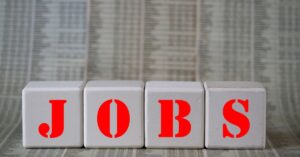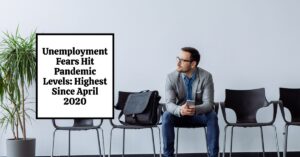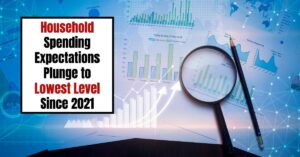The US job growth in June 2025 proved surprisingly strong, with nonfarm payrolls increasing by 147,000. This exceeded expectations of around 110,000 and prompted a shift in market expectations, essentially eliminating the possibility of a July interest rate cut by the Federal Reserve. But digging deeper, the report reveals a more nuanced picture, with government hiring largely fueling the growth and certain sectors still struggling.
US Job Growth Booms in June 2025 With Payrolls Exceeding Expectations
A Bird's-Eye View of the June Jobs Report
Let's break down the key takeaways from the June 2025 jobs report. It's easy to get caught up in the headline number, so let's explore below the good and not-so-good insights.
The Good News:
- Payrolls Exceeded Expectations: The addition of 147,000 jobs signals continued, albeit moderating, economic activity.
- Unemployment Rate Dipped: Falling to 4.1%, the lowest since February, suggests a tightening labor market.
- Government Hiring Surged: A robust increase of 73,000 jobs in the government sector, particularly in state and local government fueled by education-related positions.
- Healthcare Remains Strong: The Healthcare sector continues to be a reliable job creator, adding around 39,000 jobs.
The Not-So-Good News:
- Drop in Labor Force Participation: The labor force participation rate fell to 62.3%, its lowest level since late 2022, indicating that people are leaving the workforce.
- Household Survey Showed Weaker Gains: The household survey only showed a 93,000 job gain which is significantly lesser compared to nonfarm payrolls data of 147,000.
- Uneven Distribution of Growth: Job gains were concentrated in a few sectors, while others saw little or no change.
- Manufacturing Losses: This sector is very important and it lost 7,000 jobs.
Sector-Specific Insights: Where Are the Jobs Really Going?
It's essential to delve into which sectors are driving job growth. The June report highlighted some clear winners and losers:
- Government: As mentioned, the government sector was the primary driver of job growth in June, adding 73,000 jobs. This makes up roughly half of all jobs.
- Healthcare & Social Assistance: Adding a combined 58,000 jobs; these sectors continue to be pillars of job creation.
- Construction: Saw a moderate increase of 15,000 jobs, possibly reflecting ongoing construction projects.
- Manufacturing: The data paints a very dim picture by losing 7,000 jobs.
The Federal Reserve's Dilemma: Will They or Won't They Cut Rates?
The strong June jobs report has thrown a wrench into the Federal Reserve's plans for potential interest rate cuts. Prior to the report, there was some anticipation of a rate cut in July. However, the data practically eliminated that possibility, as traders priced in a significantly lower chance of a cut.
The Fed is walking a tightrope, balancing the need to combat inflation with the risk of slowing down economic growth. The jobs report provides conflicting signals. While the strong job gains suggest a resilient economy, the slowing labor force participation rate and uneven sectoral growth indicate potential underlying weakness.
For me, the Fed's decision hinges on the incoming data over the next few months. If inflation continues to moderate and economic growth remains stable, they may consider a rate cut later in the year. However, if inflation re-accelerates or the economy shows signs of significant slowing, the Fed will likely hold steady.
Impact on Financial Markets:
As you might expect, the financial markets reacted swiftly to the jobs report.
- Stocks Rose: Equities experienced an upward tick.
- Treasury Yields Increased: Treasury yields rose sharply, reflecting a shift in expectations for future interest rate hikes.
- Rate Cut Odds Decreased: Market expectations for further rate cuts declined.
The Political Angle: Trump's Take on the Economy
As always, politics plays a role in how economic data is perceived and interpreted. President Trump has been vocal about the need for the Federal Reserve to lower interest rates, even going so far as to suggest that Fed Chair Jerome Powell should resign.
Trump's perspective is that lower interest rates would stimulate the economy and boost job growth. However, some economists fear that cutting rates prematurely could risk reigniting inflation. The interplay between the President's pronouncements and the Fed's independent decision-making adds an extra layer of complexity to the economic outlook.
Long-Term Trends and Challenges:
Looking beyond the immediate data, several long-term trends and challenges are shaping the US labor market:
- The Aging Workforce: As the baby boomer generation retires, the labor force participation rate is likely to continue to decline.
- Skills Gap: Many employers struggle to find workers with the skills needed for the jobs of the future, particularly in technology and healthcare.
- Automation and AI: The increasing use of automation and artificial intelligence is likely to displace some jobs, while also creating new opportunities.
What This Means for You: A Personal Perspective
As someone who follows the economy closely, I believe the June jobs report provides a valuable, but incomplete, picture of the US labor market. While the headline number is encouraging, I think it's important to look behind the numbers and understand the underlying trends and challenges.
Here's what it means for you folks at home:
- For Job Seekers: Focus on sectors with strong job growth, such as healthcare, social assistance, and government. Upskilling and reskilling can also help you improve your prospects, particularly in high-demand fields.
- For Investors: Be cautious and diligent. Monitor economic data closely and adjust your investment strategy accordingly.
- For Businesses: Continue to adapt to the changing labor market by investing in training and development for your employees and exploring new technologies.
Looking Ahead: Factors to Watch in the Coming Months:
These are some of the critical factors I'll be watching in the coming months:
- Inflation Data: Will inflation start escalating again? I sure hope not.
- Retail Sales and Consumer Spending: These figures are important because they reflect the overall health of the economy.
- Federal Reserve Policy: Any hint that the Federal Reserve might shift direction remains of value.
In Conclusion: A Mixed Bag, Demanding Further Scrutiny
The US job growth in June 2025 was undeniably better than expected. But, it's crucial not to take the figures at face value. The details reveal a more complex story, with government hiring driving much of the growth and certain sectors facing challenges. With this information in mind, keep an open mind and stay informed.
Tap Into Real Estate While Job Growth Surges
With U.S. payrolls exceeding expectations in 2025, the strong job market is fueling housing demand—creating ideal conditions for property investors.
Norada connects you to turnkey rental properties in high-growth areas, helping you capitalize on rising demand and build passive income.
HOT NEW LISTINGS JUST ADDED!
Talk to a Norada investment counselor today (No Obligation):
(800) 611-3060
Read More:
- US-Iran War: A New Threat to America's Shaky Economy
- Bond Market Today and Outlook for 2025 by Morgan Stanley
- The Risk of New Tariffs: Will They Crash the Stock Market and Economy?
- Stagflation Alert: Economist Survey Predicts Weak Q1 GDP Due to Tariffs
- Goldman Sachs Significantly Raises Recession Probability by 35%
- 2008 Crash Forecaster Warns of DOGE Triggering Economic Downturn
- Stock Market Predictions 2025: Will the Bull Run Continue?
- Stock Market Crash: Nasdaq 100 Tanks 3.5% Amid AI Concerns
- Stock Market Crash Prediction With Huge Discounts on Bitcoin, Gold, Houses
- S&P 500 Forecast for the Next Year: What to Expect in 2025?
- Stock Market Predictions for the Next 5 Years
- Echoes of 1987: Is Today’s Stock Market Crash Leading to a Recession?
- Is the Bull Market Over? What History Says About the Stock Market Crash
- Wall Street Bear Predicts a Historic Stock Market Crash Like 1929
- Economist Predicts Stock Market Crash Worse Than 2008 Crisis
- Next Stock Market Crash Prediction: Is a Crash Coming Soon?
- Stock Market Crash: 30% Correction Predicted by Top Forecaster






